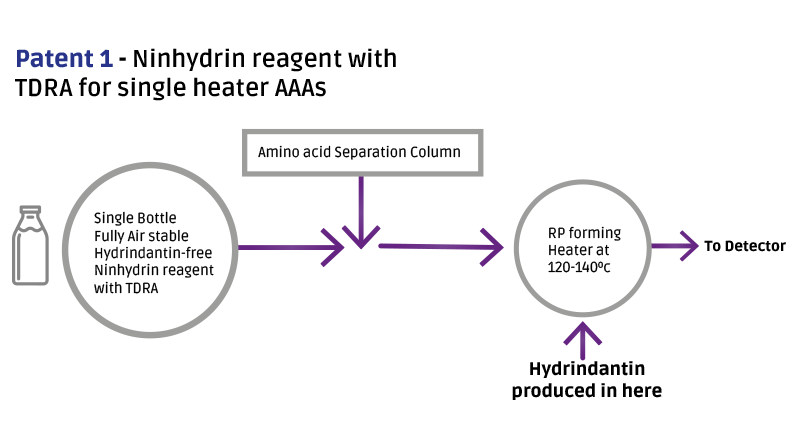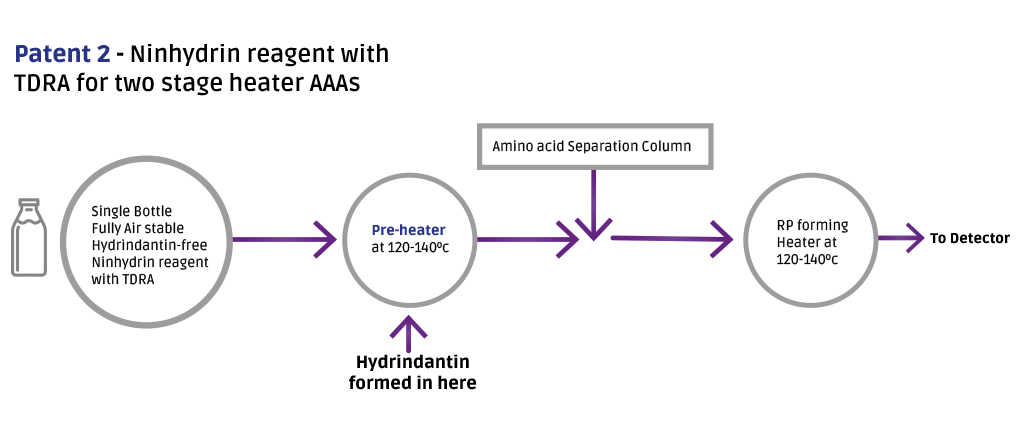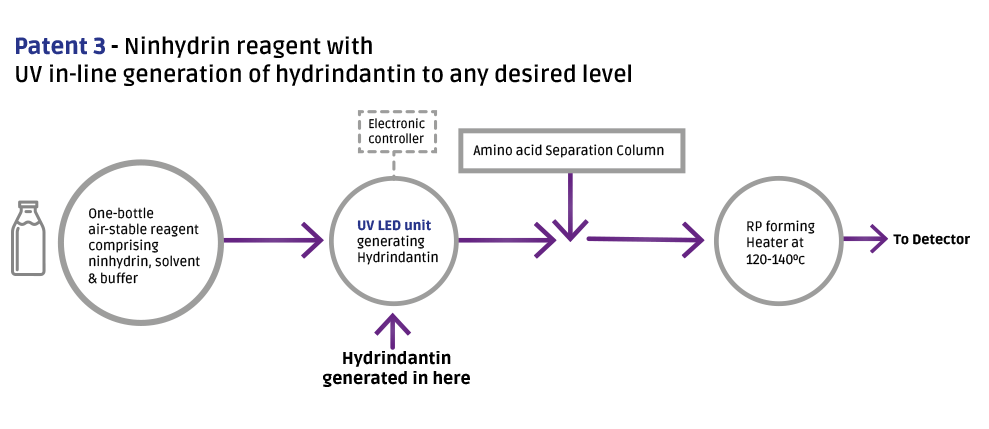The chemistry behind Patent 1 is designed to allow JPP’s hydrindantin-free reagents to be used on amino acid analysers as presently universally configured– ie on ‘single heating chamber’ instruments.
The straightforward and inexpensive instrument modifications envisaged in and protected by JPP’s Patents 2 & 3, however, allow greater sensitivity and superior analytical performance to be achieved. These patents outline and protect two different methods of analysis:
- Patent 2 introduces a pre-heating stage to the analysis process,
- Patent 3 reveals an entirely new method, in which a photochemical reaction (induced by U/V light irradiation) takes place that causes hydrindantin in precisely controllable amounts to be produced at room temperature.



